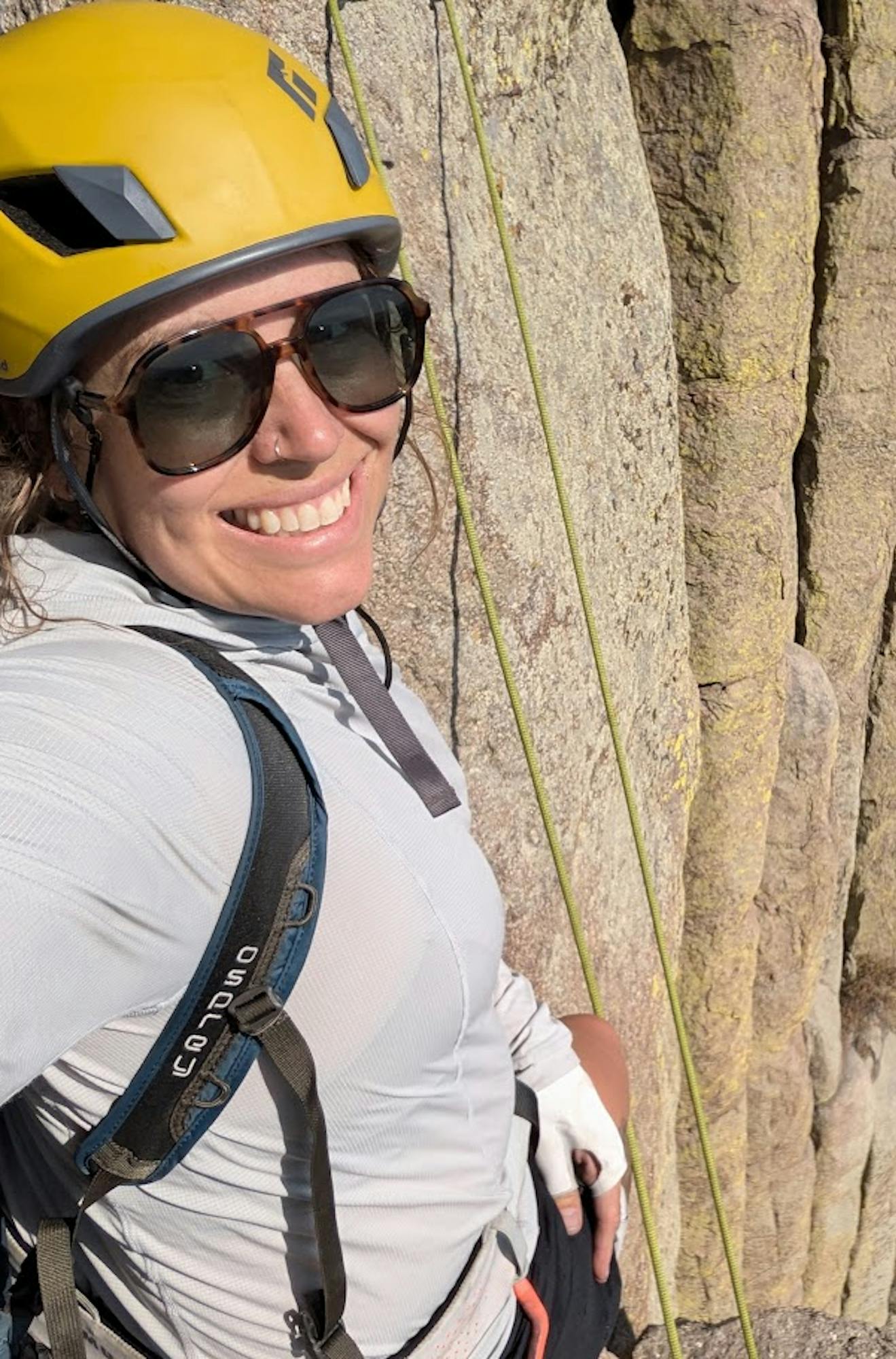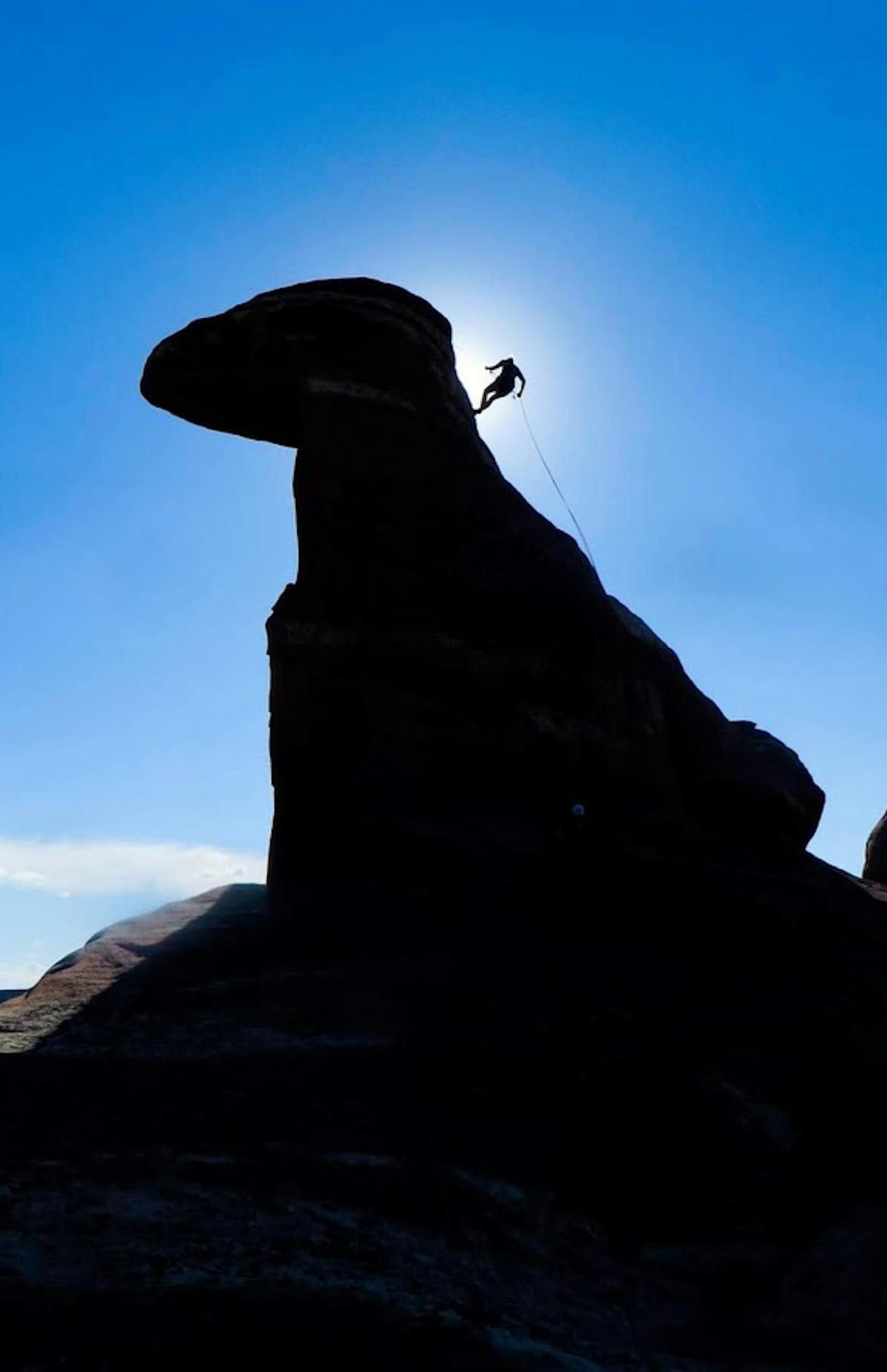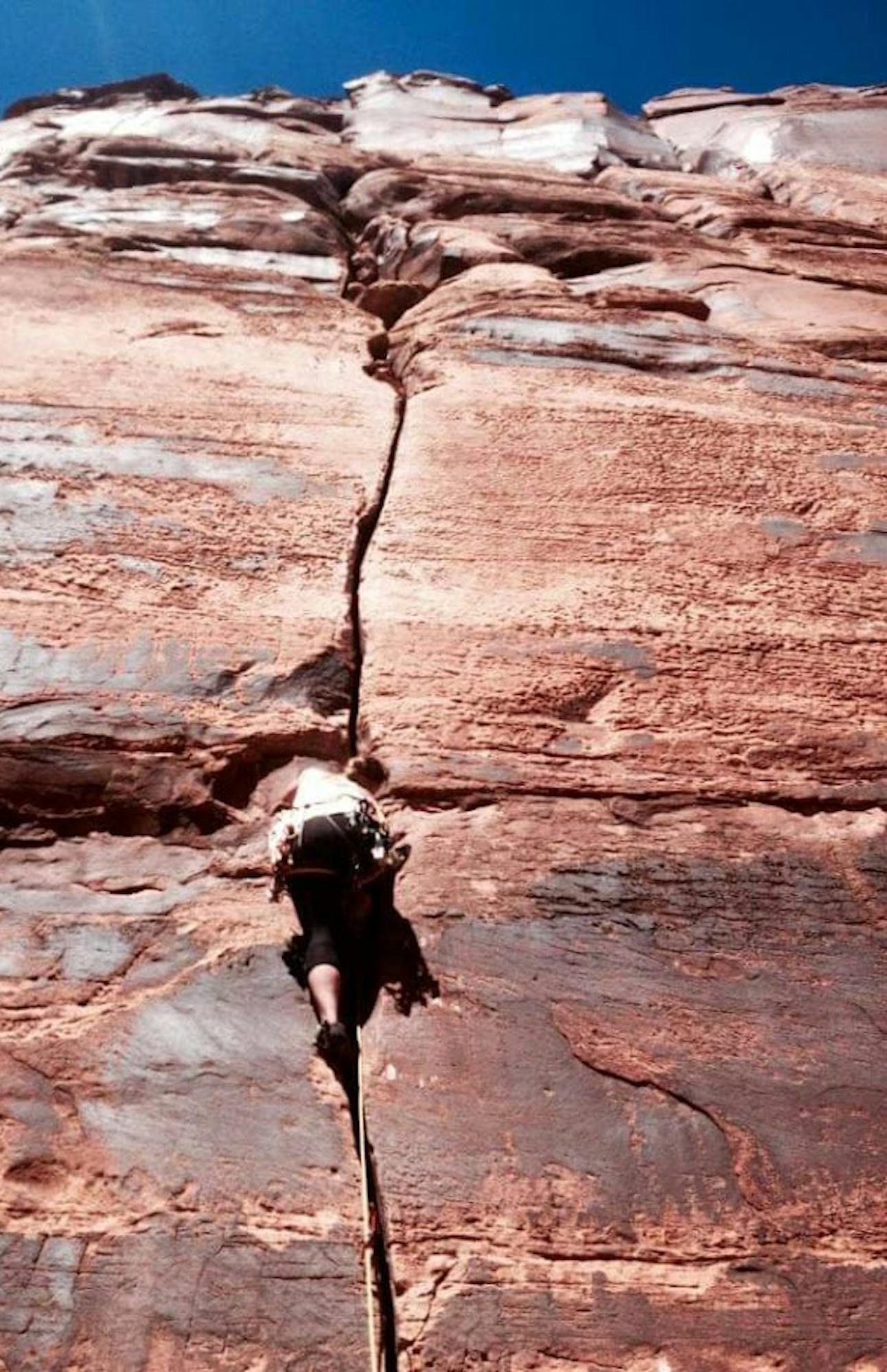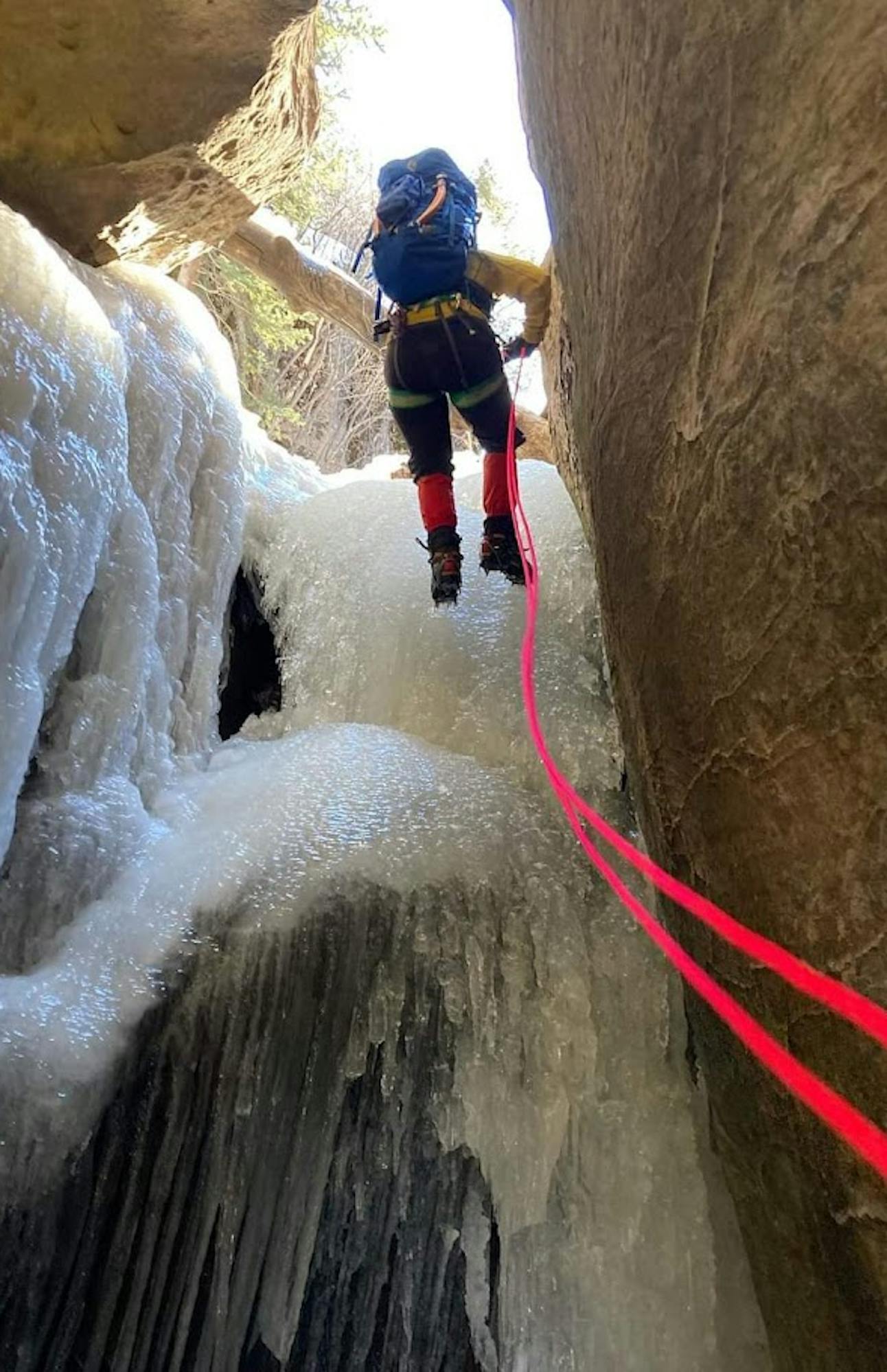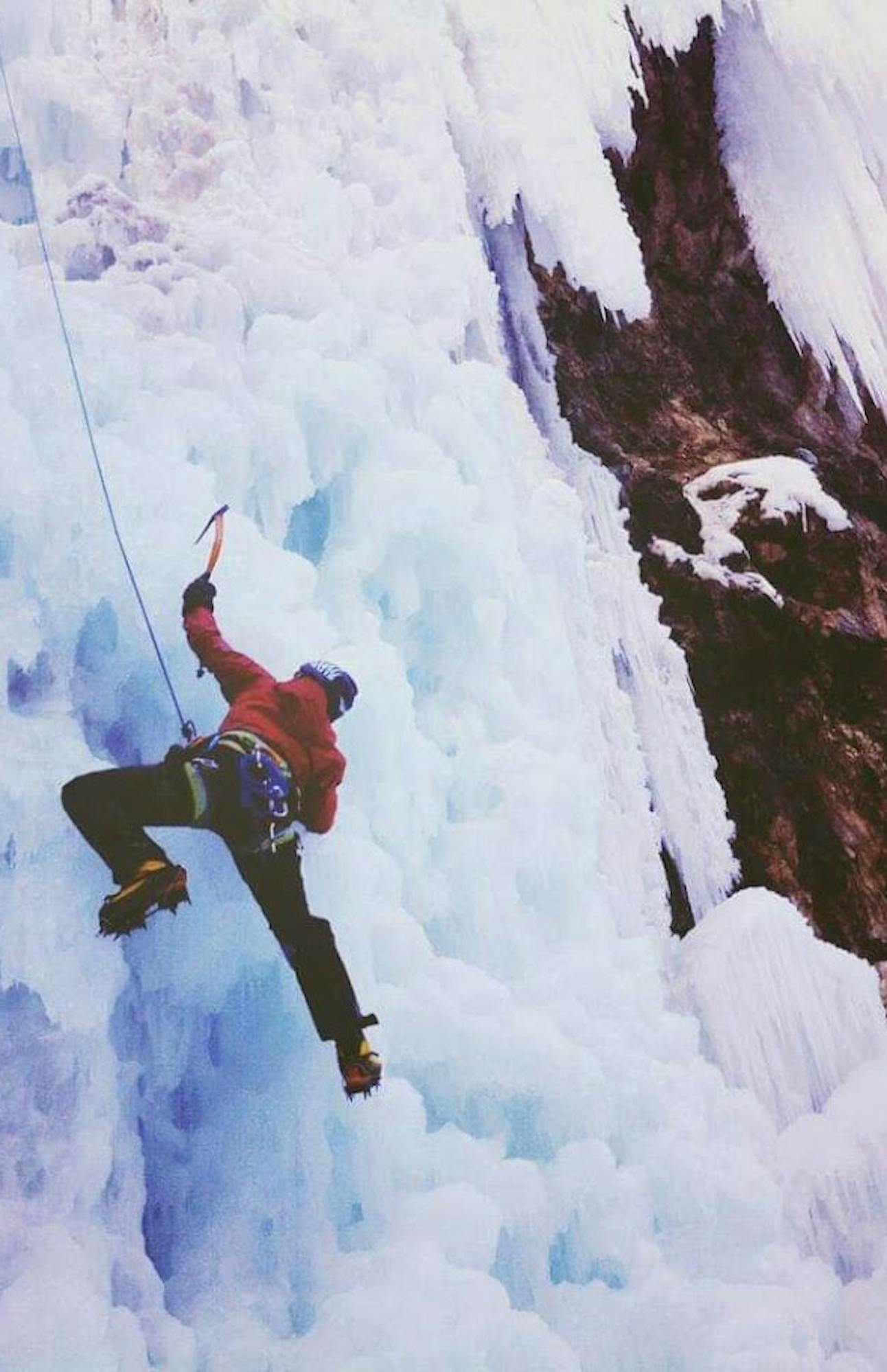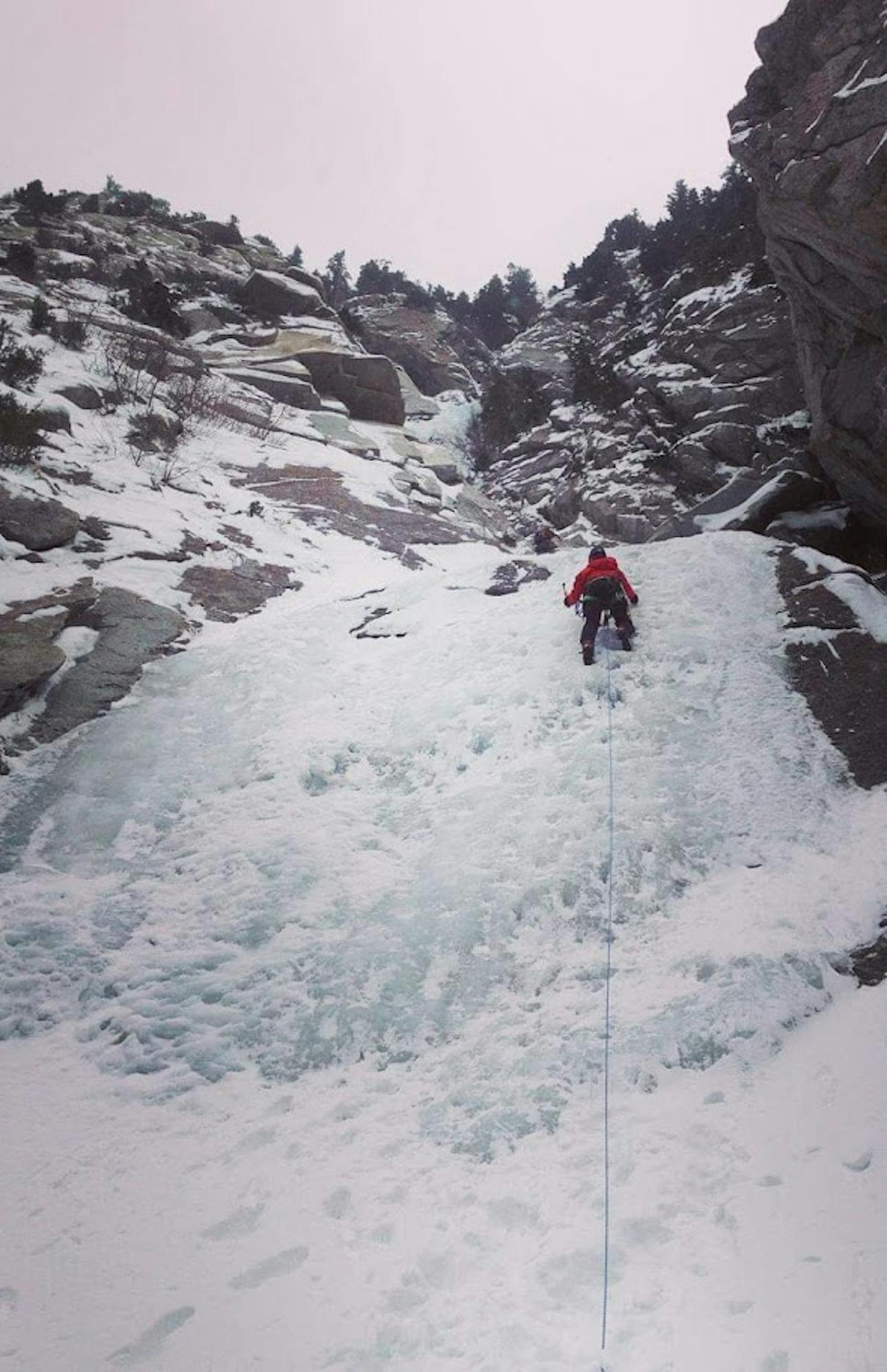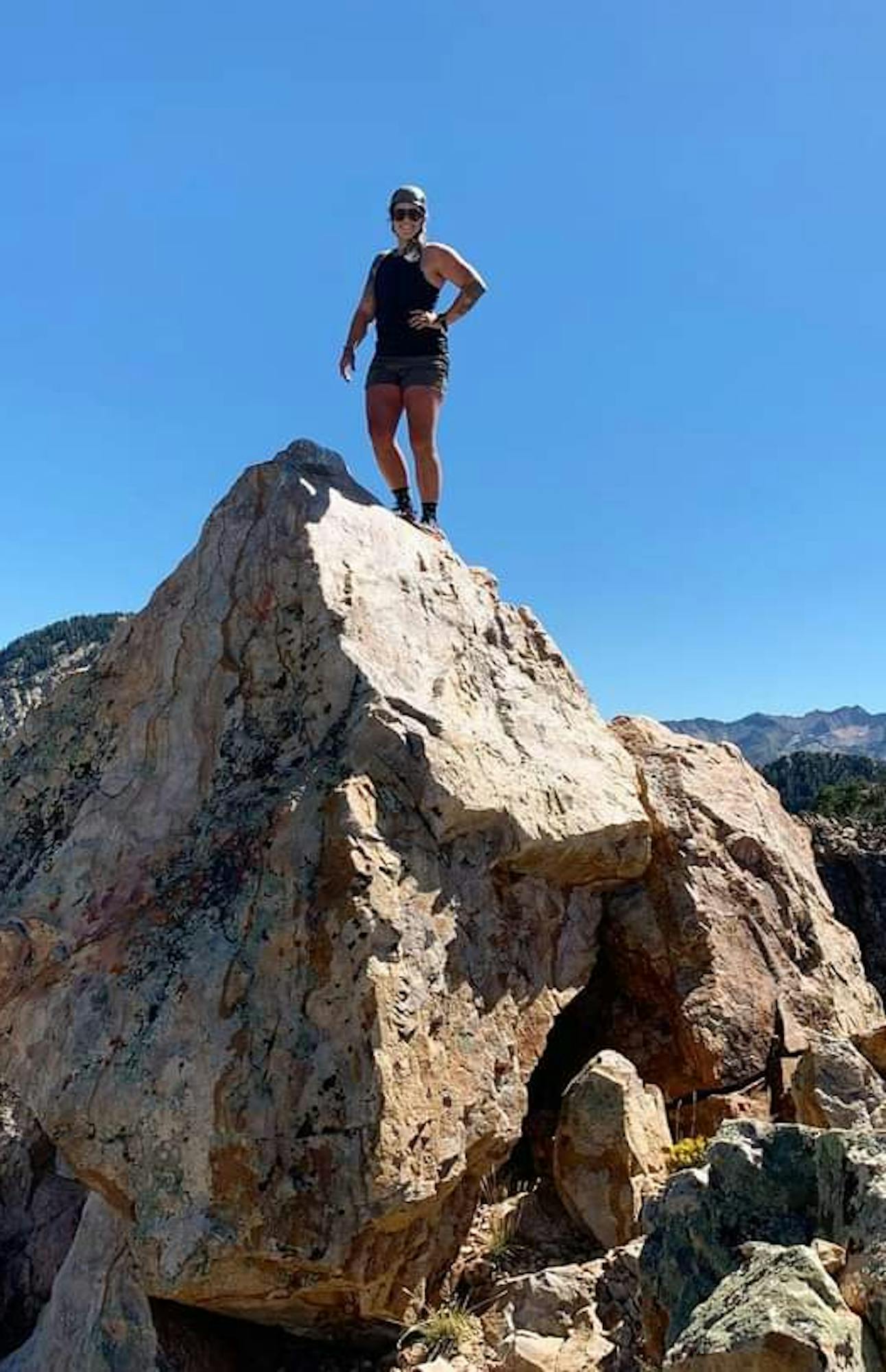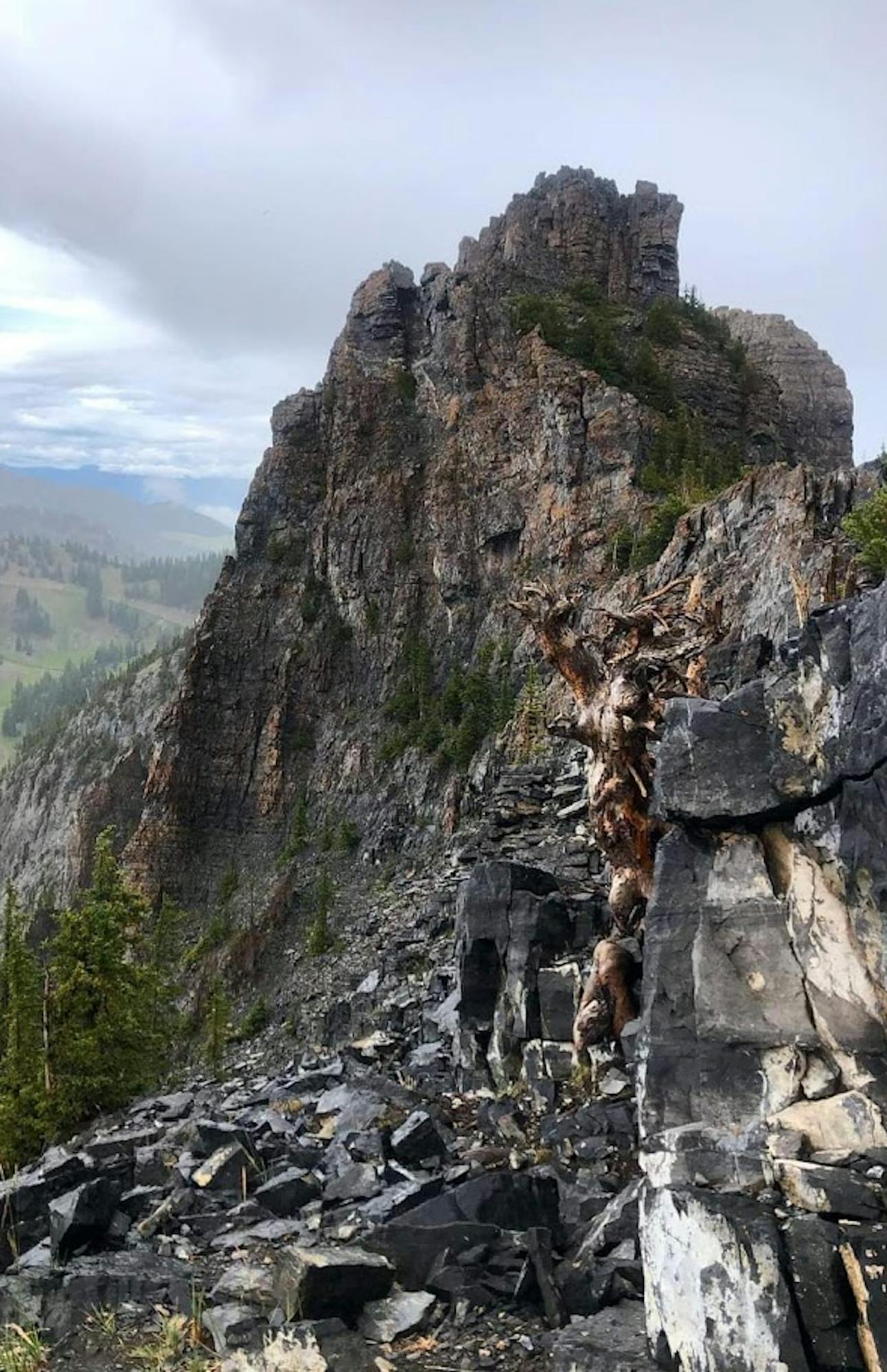Messa Rasmussen
A Personal Journey Up
Stio Local Messa rediscovers a dormant passion through a new lens
Time flew by during my first summer in Boise. As Mike wrapped up his didactic year, first year in classes, and prepared for rotations across Idaho and Washington, we spent a couple of weeks getting the van ready for full-time living. Years of planning and saving came together quickly, thanks to friends in Boise and Salt Lake City. In two weeks, we registered the van as an RV, installed a floor, finished walls, benches, blackout curtains, a ceiling, and a battery bank for essentials. With everything set, Mike was off to St. Anthony’s, Idaho and then Kennewick, Washington. With him settled, I wondered how I'd spend my summer. Now that the river permits were done and it was still too hot to bike along with the smoke from the Boise fires, I started to think more about alternative sports.
I grew up near some of the best recreation in the West yet didn’t really dabble in it til my early 20s. Rafting was my first exposure to the backcountry, but climbing was the activity that made me realize I enjoy the mountains more than I thought. With my asthma undiagnosed, I always felt out of shape hiking and hoped one day I'd be strong enough to keep up with my friends. Eventually, frustration took over and I stepped away from outdoor adventures. That changed when I met climbers during my first season guiding in Moab.
I’d spend my mornings getting up at 7 am to pack the truck with river gear, spend the day on the water with clients, be the last ones at the take-out by 5 pm, and then head straight to the crag on Potash. From there, I’d climb with these amazing guys from Cincinnati. Adam was the first one I met, and he introduced me to the rest of his crew. Adam had come to Moab with his built-out Astro van, fell in love, and soon convinced his friends to join him. I still remember the night they arrived, barely stopping to unpack before we hit the wall. We started late, around 8 pm, climbing as the sun set and cooling down in the evening air, lighting up the wall with headlamps. It was surreal, and I couldn’t imagine what it felt like for Chris, who was fresh from the Midwest.
After that season, winter came, which, at that time, didn’t mean much for me, as I hadn’t learned to ski. Then I met some amazing people at an event who took me ice climbing. Climbing frozen waterfalls was a completely new experience. Cody, Wyoming blew my mind. We attended an ice festival and spent one day on a mountaineering route, climbing a series of four frozen waterfalls, ending with the longest and most impressive one. Hearing water actively running beneath the ice was both surreal and thrilling.
I was hooked, trying to get up to the Wasatch to climb as often as possible. I even made trips to Moab, Indian Creek, St. George, and the City of Rocks. It was at City of Rocks that I had my first lead fall. I had a group of friends who were strong climbers, and their confidence was intimidating. Later, I’d realize this was my own pride getting in the way of actually learning. I pushed myself to match their ability, and when I met more people who enjoyed climbing, I got in my head even more.
Not everyone in the community has this mindset, but at the time, there was a certain attitude: if you didn’t climb at the same level, others might not want to climb with you. I placed that pressure on myself, too, feeling self-conscious if I couldn’t master all 5.9 grades on lead, assuming that meant I couldn’t try harder climbs. I know now that not all 5.9s are created equal; in fact, 5.9+ routes have a reputation for surprising climbers, often testing mental endurance and technique. These routes offer a glimpse into the boldness of early climbers who tackled these challenges in boots, long before the first rubber-soled climbing shoes appeared in 1979.
As my confidence waned, so did my ability. My ego led to my first lead fall on a 5.9 in City of Rocks. Lead falls don’t always have to be a huge event, but mine was. I took an awkward cartwheel swing, upside down and without a helmet. This experience taught me to always wear a helmet when tied in. There was a rock feature of a cone that you had to match your hand and foot to step up on. From there the next move was to balance as you reach to grab a thin piece of rock separated from the wall referred to as a flake. I had made the rookie mistake of avoiding a move that felt intimidating, trying instead to go around it. That decision led to a slip, a swing, and a flip into a ledge below. Luckily, I hit my hip and not my head. It was terrifying. Still, my ego pushed me to jump back on the wall right away. My confidence spiraled from there.
Eventually, I shifted from climbing to rafting, which offered similar challenges but with less time to get stuck in my head. Responding to danger on the water suited me better, and climbing took a backseat.
Years later, after leaving the guiding industry and following the passing of my father, I began climbing local peaks in the Wasatch to honor him. My father, an avid hiker, often spent days alone in the mountains. From these peaks, I began to see the mountains through his eyes and rekindled my appreciation for rock faces. I set goals to climb specific peaks, some requiring low 5th-class climbs, and entertained the idea of returning to climbing. Remembering a book someone once recommended, The Rock Warrior’s Way by Arno Ilgner, I worked on my mental approach to climbing, staying present with the rock, free from fear of failure. This mindset helped me climb harder routes than I ever had before.
Going to Bear Lodge, also known as Devil’s Tower, I was a bundle of nerves. The climbing here has a reputation: hard, long, and old-school, making it both a challenge and a humbling experience. On our first day, my climbing partner took the sharp end of the rope and led us up a modest 5.9 off-width route, which, though one of the easier ways to the top, demanded a full-body effort. Off-width climbing involves cracks that are wider than a fist, where you jam in a leg or arm to hold position. It took all we had, but we reached the summit.
The next few days were slower—my partner was worn out and needed a break, so we focused on less demanding climbs. I took my first trad lead on the 5.8 start of Matador, the second pitch of which leads through an impressive photographic hallway formed between the tower’s columns. The route felt worlds different, free from fear, and I climbed it with ease.
The following day, bolstered by the previous climb, I set out on a 5.9+ route, thinking it might go just as smoothly. But, as climbers say, not all 5.9s are created equal. This route was a two-pitch climb to the summit, with the first pitch being a massive 140-foot endeavor. I started leading, but quickly found myself in a gear crisis—after placing so many pieces, I had almost nothing left and wasn’t even halfway up. I descended, re-equipped, and climbed back to where I’d left off. Fatigue began to creep in, yet I was determined to reach the top. After pushing up another 30 feet, however, I hit my limit. Sloppy moves and exhaustion set in, and I made the conscious choice to let my partner finish the last stretch. Looking back at the final 40 feet, the polished holds and sparse gear placements confirmed my decision—this was the right call.
Had this been years ago, I would have let disappointment consume me for not completing the climb. But this time, I felt satisfied and at peace with what I had accomplished. My partner and I, both sore and tired from the weekend’s efforts, finally called it. There was a moment of tears—perhaps from the release of old shame and the acceptance of my own limitations.
Limited as I was, I felt no disappointment. It marked a shift in how I viewed myself in this sport and where I belonged in it. I had done more than I thought possible after my time away from climbing. Throughout the weekend, I remembered the lessons of The Rock Warrior’s Way: by staying present on the wall, I avoided the mental traps of self-doubt, allowing myself to try without pre-judgment.


